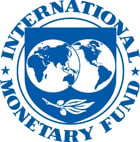
Typical street scene in Santa Ana, El Salvador. (Photo: iStock)
IMF Survey : G20 Economies: Rebalancing for More Durable Growth
October 30, 2015
- External imbalances have narrowed; improvements expected to last
- Managing high public debt in advanced economies remains a key challenge
- Joint policy actions would help further rebalancing and growth
The Group of Twenty (G20) advanced and emerging market economies has made progress in reducing their large external current account imbalances and some progress on internal imbalances. However, greater policy efforts across the membership are needed for stronger and more sustainable growth, says a newly published IMF analysis.

G20 flags on clockwork orrery. At the request of the G20, the IMF provides technical analysis to evaluate key imbalances (photo: Oliver Burston/Ikon Images/Corbis)
G20 MUTUAL ASSESSMENT PROCESS
The G20, seeking to make the world less prone to crisis, while strengthening growth prospects, has made the reduction of the imbalances of its member economies one of its key objectives. Thus, as part of its Mutual Assessment Process, the G20 agreed to have assessments every two years of large and persistent imbalances identified against a set of indicative guidelines. The IMF’s Imbalances and Growth report, which was prepared at the G20’s request, provides general trends and assessments since the 2013 update.
Based on the guidelines agreed by the G20, the same nine members as in the 2013 exercise—China, the euro area, France, Germany, India, Japan, Spain, the United Kingdom, and the United States—were identified for further assessment of their imbalances. For each of these members, the report, which covers both external and internal imbalances, discusses the outlook for imbalances and the IMF staff assessment and policy implications. Overall, the analysis suggests that further policy action across the G20 membership, tailored for deficit and surplus economies, is needed to facilitate further internal and external rebalancing to support stronger growth.
External imbalances have decreased
Global current account imbalances (the sum of deficit and surpluses) have narrowed sharply since their pre-crisis peak, and most of the adjustment is expected to be durable. They declined to 3½ percent of world GDP in 2014, down from over 5½ percent during 2006-08.
The improvement in current account imbalances reflects to a large extent subdued domestic demand in economies with large pre-crisis deficits. In some of these economies output gaps remain large, and some of the improvement in the current account balance could reverse as domestic demand strengthens, posing risks for economies with weak net international investment positions.
Weak growth may reflect in some cases a lack of rebalancing in some large surplus countries. In the euro area for instance, the substantial adjustment of debtor countries has not been matched by a rebalancing of large surplus countries, which has weighed on overall euro area demand.
Going forward, recent trends in oil prices and exchange rates will have mixed effects on current accounts, though would not affect much excess imbalances. For instance, the fall in oil prices reduces the surpluses of oil exporters and improves the current account deficits of deficit countries. But it also tends to increase external imbalances in countries with large current account surplus (e.g., Germany, Japan, China).
Reducing fiscal imbalances a challenge
Public debt remains very high in advanced economies, despite appreciable consolidation efforts, and remains broadly unchanged from the 2013 sustainability update. While fiscal adjustments over the past several years and record low interest rates have helped containing indebtedness, the IMF analysis finds that sluggish growth and low inflation have prevented a sizable reduction in public debt levels. Further action is still needed, the report said, to put public debt on a sustainable path.
Need for joint action
The report concludes that joint policy actions by surplus and deficit economies are needed to achieve both more balanced and stronger growth. For example: in China, policies should focus on further rebalancing toward consumption, while preventing too sharp a slowdown in growth. In the euro area, creditor countries, like Germany, should focus on boosting domestic demand, including through public investment, while debtor countries like France and Spain should further enhance competitiveness and reduce barriers to employment. Policies which facilitate the adjustment of real exchange rates would also help rebalancing.
Finally, in many advanced economies, managing high public debt in a low-inflation environment remains a key challenge. While fiscal consolidation is needed to achieve more sustainable debt levels, its pace should be attuned to the strength of economic conditions and not offset the direct positive effect of consolidation on debt ratios.


